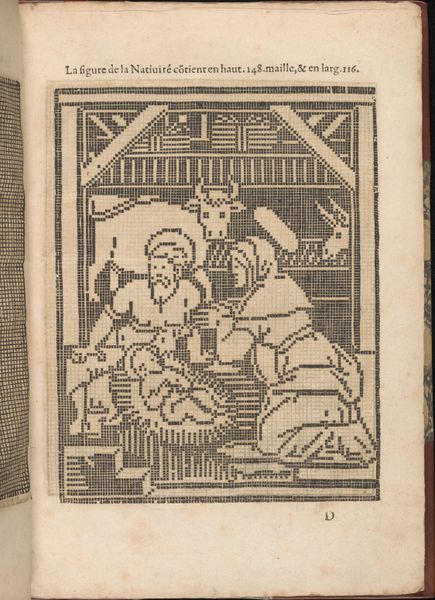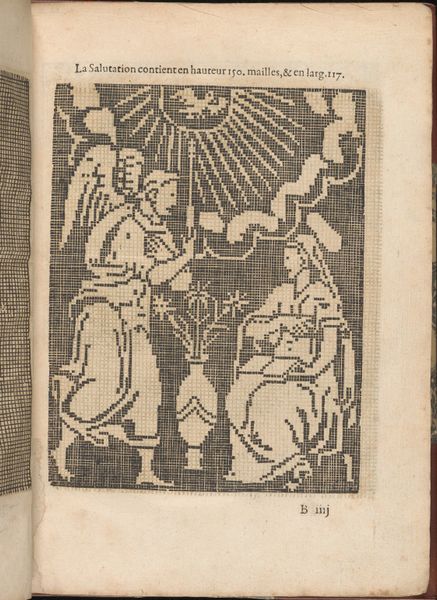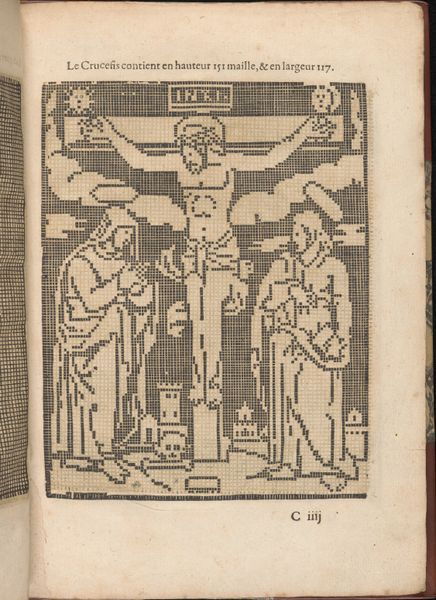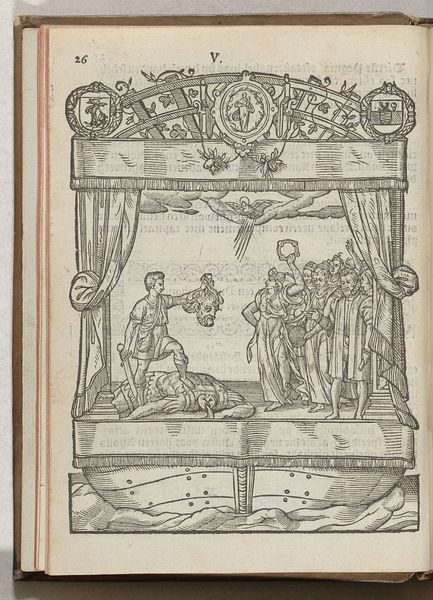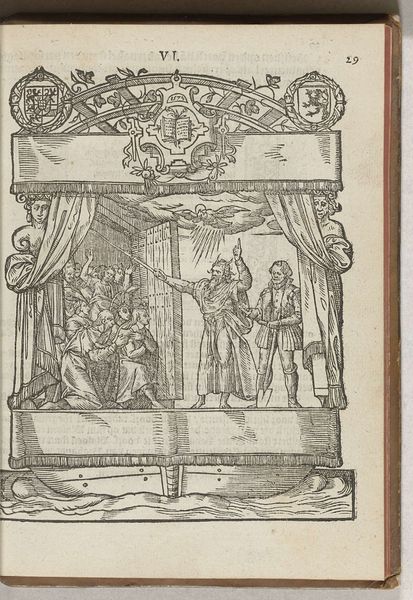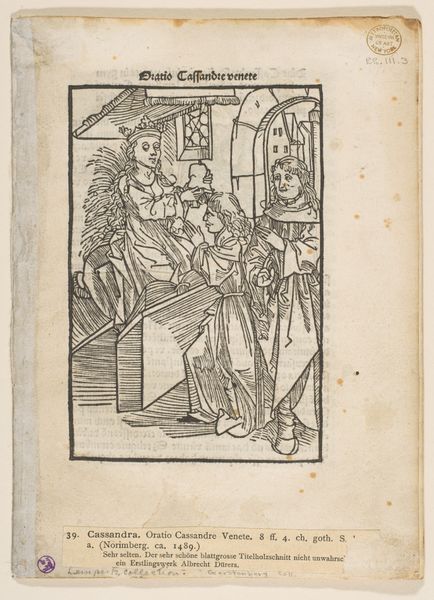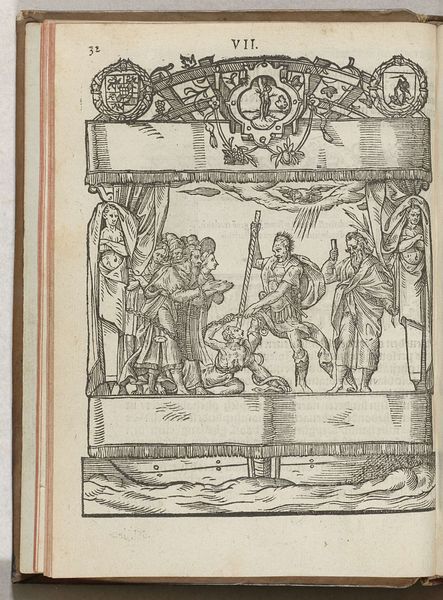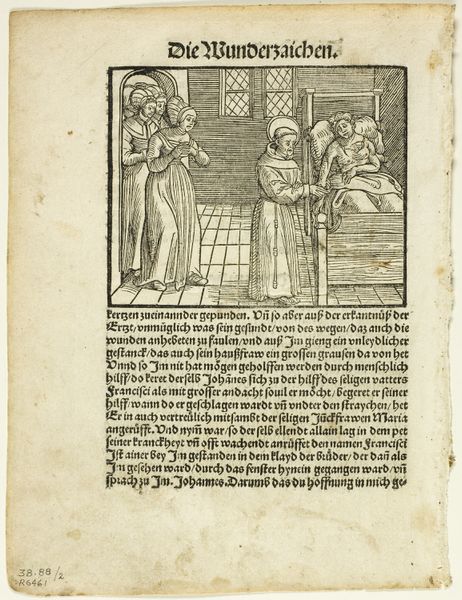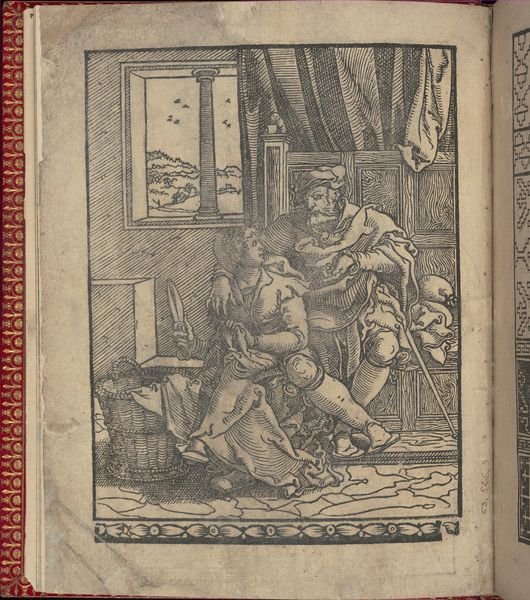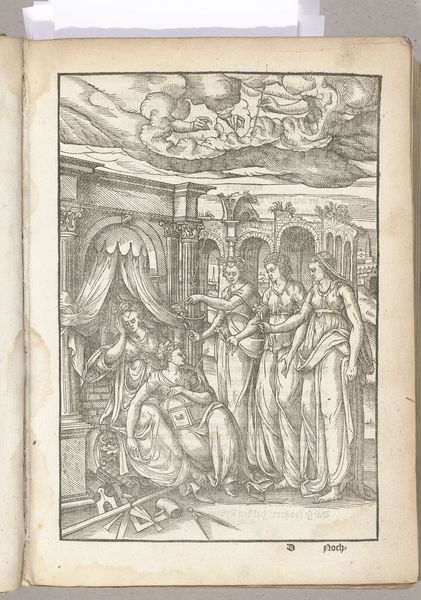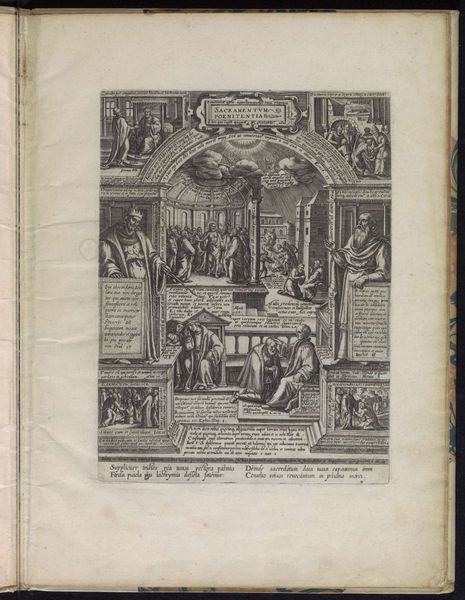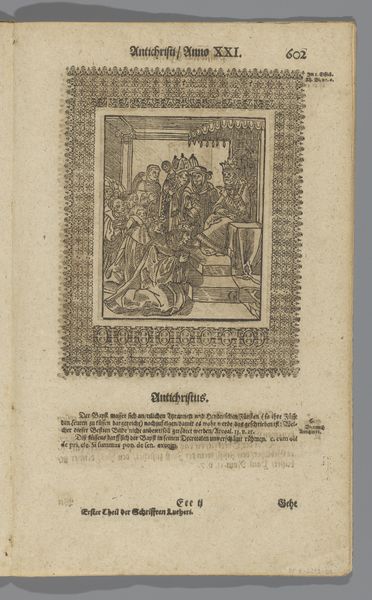
Les Secondes Oeuvres, et Subtiles Inventions De Lingerie du Seigneur Federic de Vinciolo Venitien, page 14 (recto) 1603
0:00
0:00
drawing, print
#
drawing
#
narrative-art
# print
#
figuration
#
history-painting
Dimensions: Overall: 9 7/16 x 6 1/2 in. (24 x 16.5 cm)
Copyright: Public Domain
Curator: Well, let's start by introducing "Les Secondes Oeuvres, et Subtiles Inventions De Lingerie du Seigneur Federic de Vinciolo Venitien," specifically page 14. It dates back to 1603, and here at the Met, it's catalogued as both a drawing and a print, attributed to Federico de Vinciolo himself. Editor: My first impression? The detail achieved with what looks like a grid system is mesmerizing! The entire image is constructed using a pattern that emulates an embroidered image. It's almost pixelated but remarkably evocative. Curator: Exactly! It's a peek into early 17th-century representations, where textile patterns held cultural significance for domestic craft but also acted as a powerful vehicle for propagating political and religious narratives. Vinciolo wasn't just creating patterns; he was disseminating ideas in the early modern era! How might the patterns reflect, subvert, or critique gendered roles? How are patterns interwoven with ideas of power, status, and access? Editor: It certainly makes me think about the labor involved. Imagine recreating this design as a lacemaker in a Venetian workshop. Vinciolo, a "Seigneur" benefitting economically from its reproduction as a symbol, as well as the materials used, highlights a real hierarchy inherent in its creation. Curator: Absolutely. It speaks volumes about class divisions and artistic hierarchies within Venetian society at that moment. Also consider the social dynamics, who were his intended audiences, the symbolism in representing it. Editor: I'm stuck thinking about the tension here between something being a mass-produced pattern and an extremely meticulous and demanding production practice, like needle lace, at the time. Lace was a marker of affluence, the original bling. Who gets to make it, wear it, and profit from it? Curator: Thinking about who would buy or view a manual like this is fascinating. What were the implications of giving bourgeois and aristocratic women access to intricate, often exclusive patterns through a book like this? Editor: I suppose we're seeing an early form of accessible luxury – a sort of DIY high-end style. The social ramifications of printed craft patterns and techniques makes the viewer question: who has the agency? Curator: Definitely some things to unpack! Hopefully we’ve offered some compelling lenses to see its narrative significance. Editor: It's astonishing how relevant those tensions remain centuries later when you consider what is made available versus the cultural and economic impacts and questions of agency.
Comments
No comments
Be the first to comment and join the conversation on the ultimate creative platform.
